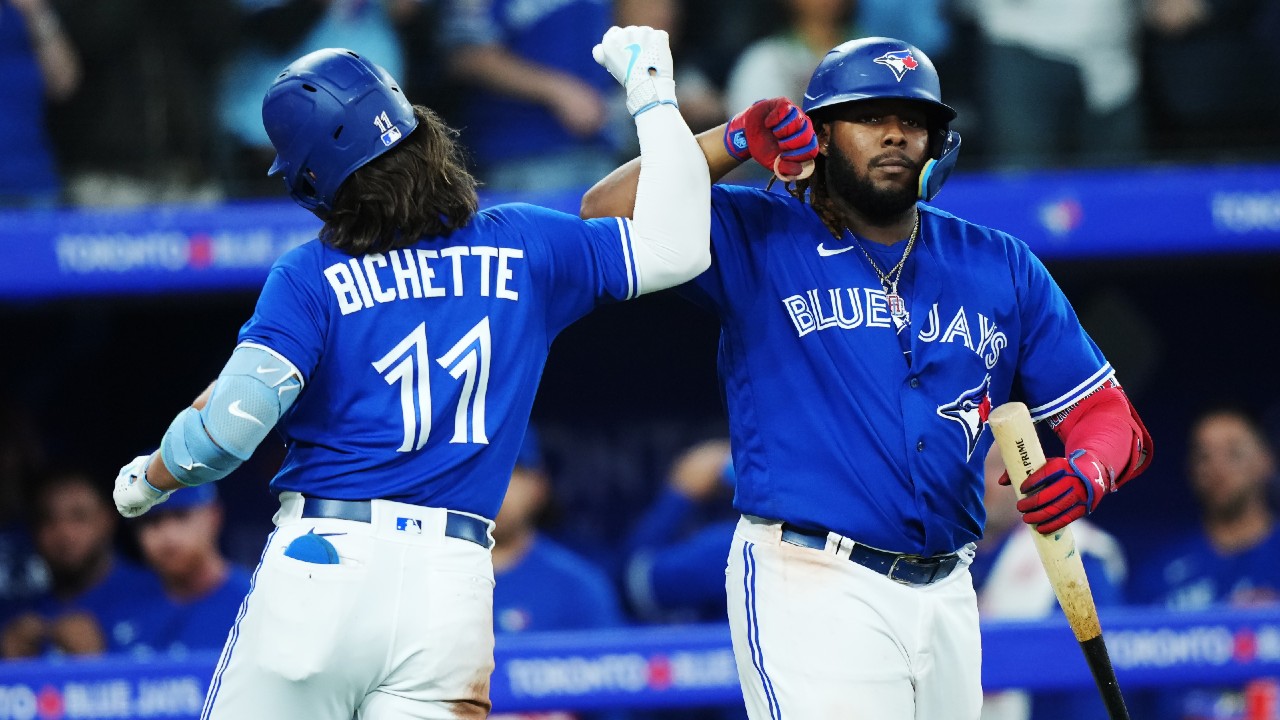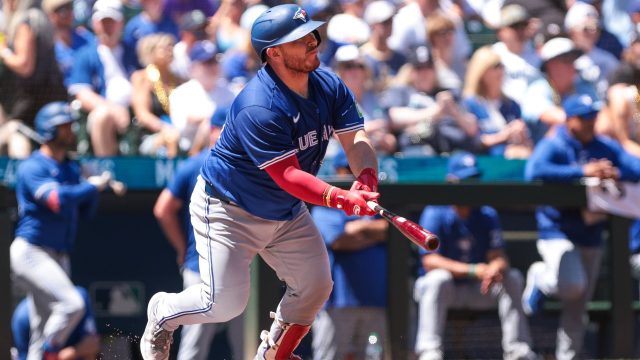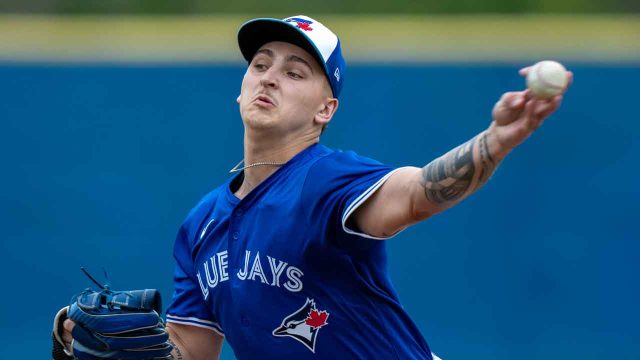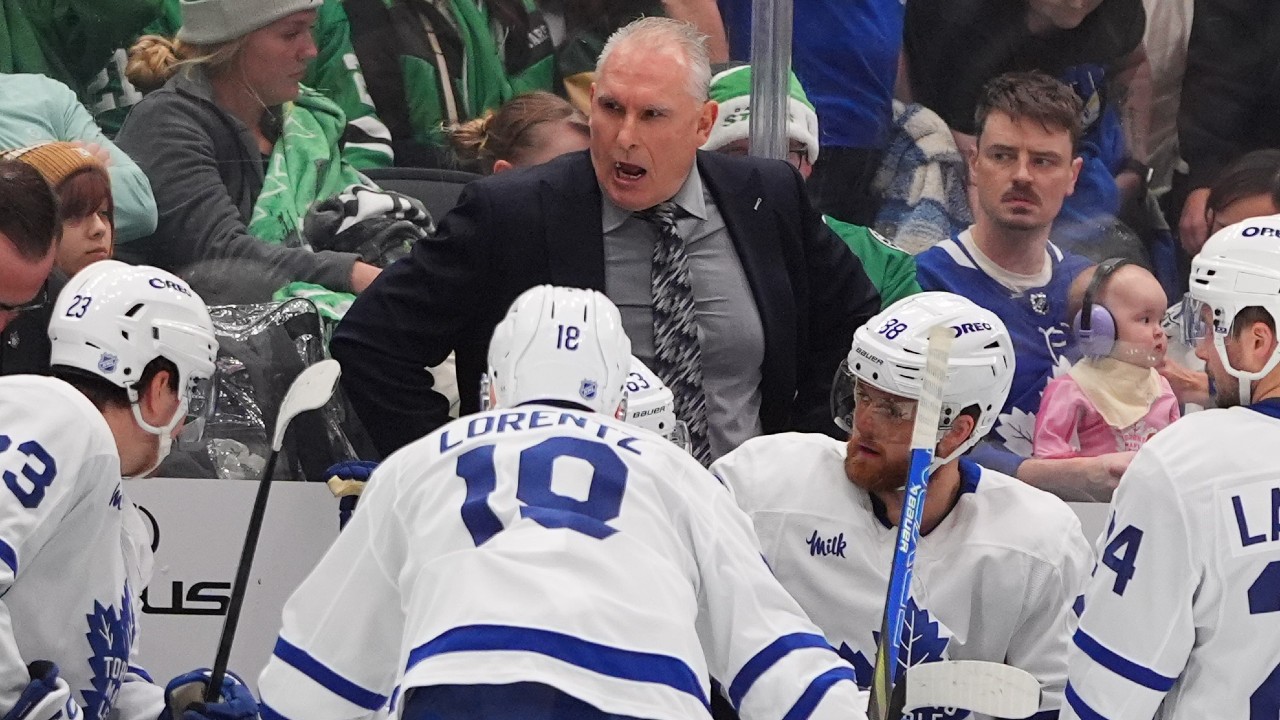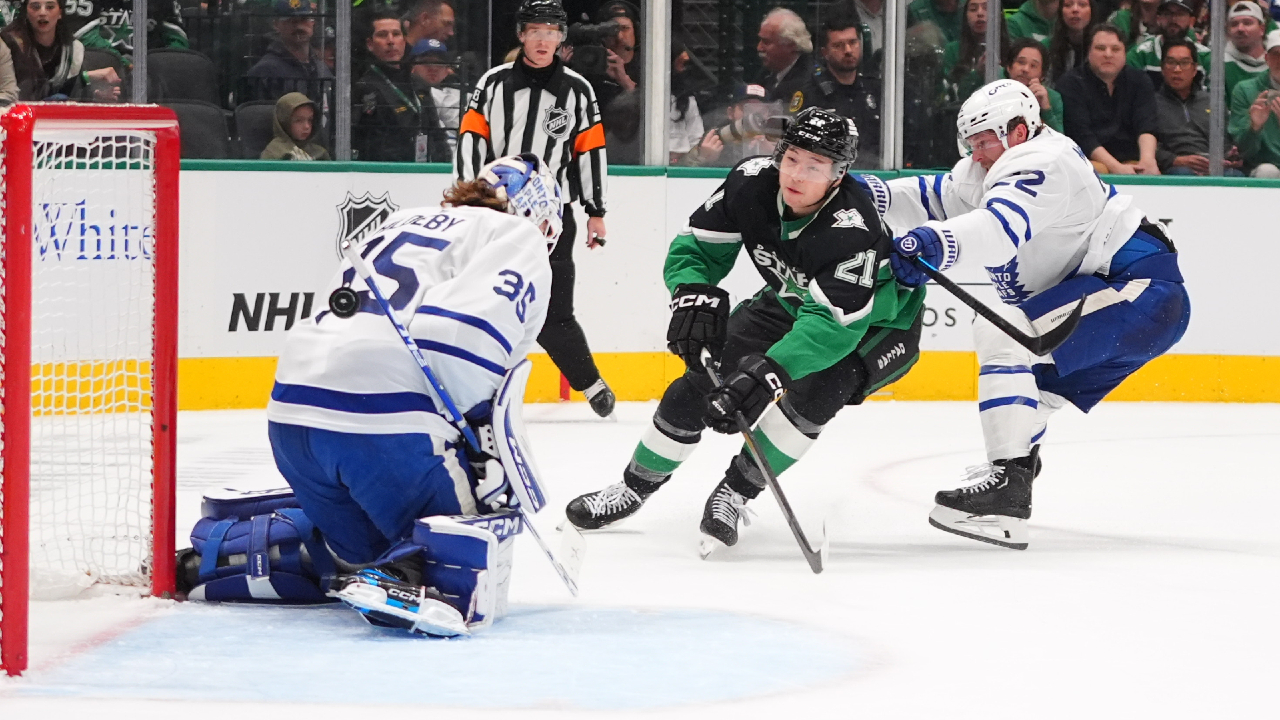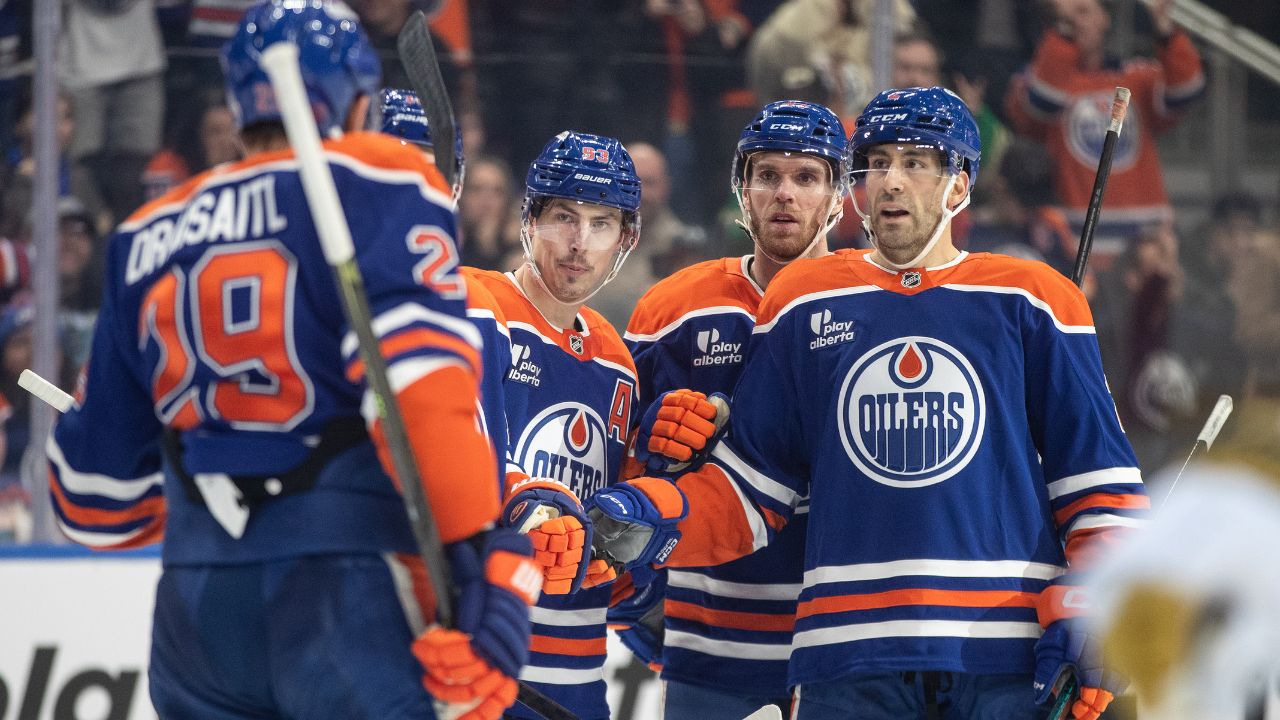
TORONTO – Regardless of how the 2024 season plays out for the Toronto Blue Jays, right now their intention is to compete in 2025.
So, while hope is waning this year, the July 30 trade deadline does offer them a chance to start making sure next year is better. And since team building doesn’t happen in a vacuum, it’s worth looking ahead one more year to 2026, the first season after Vladimir Guerrero Jr. and Bo Bichette are scheduled to hit free agency. Within the front office, Blue Jays executives are surely planning along these lines, too.
With that in mind, let’s take a look at how the Blue Jays are positioned for 2025 and 2026 as a way of understanding where the organization stands. Maybe those needs will even offer hints at how they approach the 2024 trade deadline:
2025 Blue Jays: One last chance
Pending free agents on the 2024 team: Yusei Kikuchi, Yimi Garcia, Trevor Richards, Kevin Kiermaier, Justin Turner, Danny Jansen
Notable MLB free agents: Juan Soto, Pete Alonso, Willy Adames, Alex Bregman, Anthony Santander, Teoscar Hernandez, Cody Bellinger, Paul Goldschmidt, Tyler O’Neill, Ha-Seong Kim, Rhys Hoskins, Kyle Higashioka, Carson Kelly, Corbin Burnes, Max Fried, Jack Flaherty, Nick Pivetta, Clay Holmes, Paul Sewald
Current guaranteed salaries: $130.5 million for eight players
Projected 2025 Depth Chart:
Catchers: Alejandro Kirk; Brian Serven
Infielders: Vladimir Guerrero Jr., 1B; Bo Bichette, SS; Spencer Horwitz, 1B/2B; Orelvis Martinez, 2B; Isiah Kiner-Falefa, 2B/3B/SS; Ernie Clement, 3B/SS; Leo Jimenez, 2B/SS
Outfielders: Daulton Varsho, George Springer
Utility: Davis Schneider, Addison Barger
Starting pitchers: Jose Berrios, Kevin Gausman, Chris Bassitt, Yariel Rodriguez, Bowden Francis, Alek Manoah (injured list)
Relief pitchers: Jordan Romano, Chad Green, Nate Pearson, Genesis Cabrera, Zach Pop, Erik Swanson, Brendon Little
Possible lineup:
Spencer Horwitz, DH
Vladimir Guerrero Jr., 1B
Bo Bichette, SS
George Springer, RF
Davis Schneider, 2B
Daulton Varsho, CF
Isiah Kiner-Falefa, 3B
Addison Barger, LF
Alejandro Kirk, C
Prospects pushing: SP Ricky Tiedemann, SP Adam Macko, OF Alan Roden, IF Leo Jimenez, IF Josh Kasevich, RP Hagen Danner, RP Eric Pardinho
Overall outlook: There’s a lot of turnover coming this off-season, and the Blue Jays have nearly $50 million coming off the books, but their roster will need significant improvements, too. As of today, they have the makings of a capable starting rotation, but — this may sound familiar — they lack power and relief pitching. Turning this roster into a contender will require successful moves on multiple fronts, and the sooner the Blue Jays start addressing these needs, the better.
Strengths: Even with modest home run totals, Vladimir Guerrero Jr. is one of MLB’s most productive offensive players. Alongside Guerrero Jr. and Bo Bichette, there’s a solid cast of position players, including Daulton Varsho, Davis Schneider, Spencer Horwitz and Isiah Kiner-Falefa.
Meanwhile, on the pitching side, Berrios, Gausman and Bassitt give the Blue Jays the core of a dependable starting rotation. Beyond that trio, Rodriguez and Ricky Tiedemann offer upside, while Manoah could return late in 2025.
Weaknesses: Acquiring a second catcher to pair with Alejandro Kirk is a must, and with no clear solution in the minor league system, the Blue Jays can be expected to add externally here. Bringing Jansen back is one possibility, but considering the team’s other needs, that’s far from a lock.
Another must for the front office: augmenting a bullpen that continues to take hits to core players such as Tim Mayza (DFA), Jordan Romano (arthroscopic surgery) and Erik Swanson (optioned to minors, non-tender candidate). Add to that the pending departures of Yimi Garcia and Trevor Richards, and it’s clear the bullpen must be a major focus this winter.
Improving on the group that now ranks 29th in MLB in ERA will require multiple arms via trade, free agency, minor-league free agency and waivers — not just one or two quality relievers but four or five before spring training. An overhaul is required here.
At the same time, the Blue Jays can’t overlook the starting rotation, which stands to lose Yusei Kikuchi. Even if Rodriguez takes on an expanded starting role in 2024, there’s always attrition among starting pitchers, and Kevin Gausman and Chris Bassitt will be pitching in their age-34 and age-36 seasons, respectively. Rounding out the rotation should probably be a priority, too.
But, so far, we’re generally talking about players who keep runs off the board, and as anyone who’s watched the current edition of the team play can tell you, they also need help scoring. A power bat should be on the team’s shopping list, considering the Jays rank 28th in MLB in home runs, and ideally this player would bat left-handed.
With Justin Turner hitting free agency, the Blue Jays have an open DH spot, but they could just as easily add a corner outfielder. On paper, Juan Soto is perfect, but bidding seriously for him could end up with the Blue Jays being used by agent Scott Boras. They’ll need better backup plans than they had this past winter after Shohei Ohtani spurned them for the Dodgers.
With the right off-season moves, the Blue Jays could compete again in 2025, but there’s a lot of work to do. If they can check off any of those boxes earlier with a well-timed summer acquisition, that would be an advisable step.
2026 Blue Jays: Facing an abyss
Potential FA departures from 2025 team: Vladimir Guerrero Jr., Bo Bichette, Isaiah Kiner-Falefa, Jordan Romano, Chris Bassitt, Chad Green, Genesis Cabrera, Erik Swanson (depending on 2024 service time)
Notable MLB free agents: Kyle Tucker, Kyle Schwarber, Cedric Mullins, Marcell Ozuna, J.T. Realmuto, Rhys Hoskins, Josh Naylor, Luis Arraez, Dylan Cease, Zac Gallen, Framber Valdez, Erick Fedde, Devin Williams, Raisel Iglesias
Current Guaranteed Salaries: $72.9 million for four players
Projected 2026 Depth Chart:
Catchers: Alejandro Kirk, Brian Serven
Infielders: Spencer Horwitz, 1B/2B; Ernie Clement, 3B/SS; Orelvis Martinez, 2B; Leo Jimenez, 2B/SS; Josh Kasevich, SS; Damiano Palmegiani, 1B/3B
Outfielders: George Springer, Daulton Varsho, Nathan Lukes, Alan Roden, Steward Berroa
Utility: Davis Schneider, Addison Barger
Starting pitchers: Kevin Gausman, Jose Berrios, Alek Manoah, Yariel Rodriguez, Bowden Francis, Ricky Tiedemann, Adam Macko
Relief pitchers: Nate Pearson, Zach Pop, Brendon Little, Hagen Danner, Eric Pardinho, Mason Fluharty
Possible lineup:
Spencer Horwitz, 1B
Alan Roden, LF
Orelvis Martinez, DH
Daulton Varsho, CF
George Springer, RF
Addison Barger 3B
Davis Schneider, 2B
Leo Jimenez, SS
Alejandro Kirk, C
Prospects pushing: 3B Cade Doughty, SP Deveraux Harrison, OF Dasan Brown, SP Kendry Rojas, SP Connor O’Halloran, SS Arjun Nimmala
Overall outlook: By the time 2026 arrives, much of the above will look quite different, but this is the starting point for the Blue Jays and underlines why they’re facing such a significant organizational reckoning. The free-agent classes after the 2024 and 2025 seasons threaten to deplete more than half of the Jays’ established big-league players and an inability to produce new cornerstone players has left them unable to replenish the core.
Now, maybe Martinez becomes the middle-of-the-order threat he has the potential to be, and Roden finds a bit more power and really takes off, and Horwitz and Barger and Schneider are consistent contributors, but the Blue Jays can’t cross their fingers and hope everything breaks their way. That’s why the work for 2026, along with ‘25, needs to start ahead of this deadline and continue this off-season, and why the looming free agencies for Guerrero and Bichette are franchise-altering.
Strengths: Berrios, Gausman and Manoah give the Blue Jays the makings of a solid rotation, Rodriguez should be properly built up and experienced by then, while Tiedemann and Macko offer promise and upside. Martinez and Roden have the potential to be good offensive players, too.
Still, the most dynamic — and under-the-radar — asset they will have is financial flexibility, given the amount of money coming off the books following 2025. They currently have nearly $73 million guaranteed to four players in ‘26, and if a team doesn’t have star players locked up, the next best thing is to have the money to acquire some.
To that end, the Blue Jays can afford to both extend Guerrero and/or Bichette and surround them with complementary talent. Or they can try to mimic the Texas Rangers, who spent half-a-billion during the 2021-22 off-season to buy a pair of cornerstones in Corey Seager and Marcus Semien, resulting in a World Series run last year.
If the Blue Jays can nail both the 2024 and 2025 drafts as well, they could reposition themselves well relatively quickly.
Weaknesses: The word ‘if’ is doing a lot of work up above and financial flexibility is only valuable when it’s applied well. While you can be the Rangers, you can also be the New York Mets, who finished 75-87 last year while carrying a record payroll of $319.5 million, plus a luxury tax hit of $100.8 million over and above that, prompting a deadline reset with an eye toward strengthening the franchise’s foundation.
There is also very little certainty on the roster and some degree of decline needs to be factored in for Springer, who’ll be 36, and Gausman, who’ll be 35. Counting on young players to be primary producers is also dangerous since development isn’t linear and the brutal reality is that far more prospects fail than succeed.
In the AL Central, they might be able to Island-of-Misfit-Toys their way to the post-season but in the relentless AL East, on the current trajectory, they won’t be set up nearly as well as their top divisional rivals.


